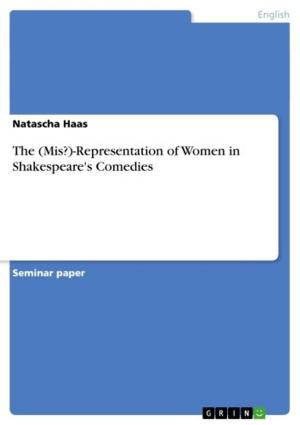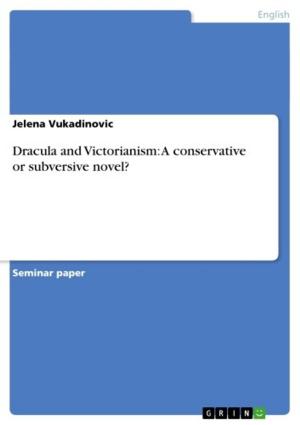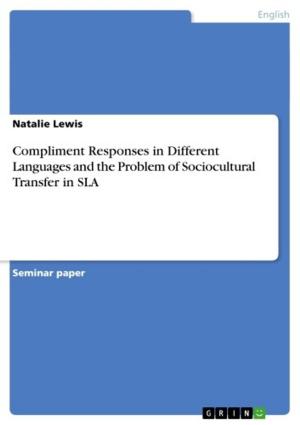Cooper's KING KONG (1933): Black Masculinity between White Womanhood and White Male Capitalist Structures
Nonfiction, Entertainment, Drama, Anthologies| Author: | Natalie Lewis | ISBN: | 9783638508391 |
| Publisher: | GRIN Publishing | Publication: | June 6, 2006 |
| Imprint: | GRIN Publishing | Language: | English |
| Author: | Natalie Lewis |
| ISBN: | 9783638508391 |
| Publisher: | GRIN Publishing |
| Publication: | June 6, 2006 |
| Imprint: | GRIN Publishing |
| Language: | English |
Essay from the year 2004 in the subject American Studies - Culture and Applied Geography, grade: 1,3, Free University of Berlin, course: Whiteness in American Cinema, 4 entries in the bibliography, language: English, abstract: The adventure-fantasy film King Kong, directed by Merion C. Cooper and Ernest B. Schoedsack in 1933, has deserved its place in classical Hollywood cinema for its spectacular special effects, which were completely new at the time and its introduction of the female scream to the horror picture. After more than 70 years, the movie has lost little of its fascination and film scholars have not grown tired of examing the metaphorical meaning of the ape-monster and the representation of blackness and whiteness in this Beauty and the Beast fable. In his article 'Humanizing the Beast', Thomas E. Wartenberg focusses on King Kong's transgression from the stereotypical racist representation of the Black male sexual monster of Skull Island to the romantic hero in the New York sequence. He argues that the film reverts the racism constructed in its first half and uses the second half to propagate that 'it is a mistake to see Black men as sexual monsters because they are human beings like all of us' (Wartenberg 175). Rather than rating the ape's personality in the New York sequence as a positive depiction of Black masculinity, I would argue that the stereotypical representation of the sexually aggressive black male was merely transformed into another stereotype, namely the non-threatening, desexualized noble negro; the latter no longer possesses any evil character traits but is nonetheless destructed in his inferior weakness in order to restore white womanhood to its pedestal and reinforce white capitalist male power structures.
Essay from the year 2004 in the subject American Studies - Culture and Applied Geography, grade: 1,3, Free University of Berlin, course: Whiteness in American Cinema, 4 entries in the bibliography, language: English, abstract: The adventure-fantasy film King Kong, directed by Merion C. Cooper and Ernest B. Schoedsack in 1933, has deserved its place in classical Hollywood cinema for its spectacular special effects, which were completely new at the time and its introduction of the female scream to the horror picture. After more than 70 years, the movie has lost little of its fascination and film scholars have not grown tired of examing the metaphorical meaning of the ape-monster and the representation of blackness and whiteness in this Beauty and the Beast fable. In his article 'Humanizing the Beast', Thomas E. Wartenberg focusses on King Kong's transgression from the stereotypical racist representation of the Black male sexual monster of Skull Island to the romantic hero in the New York sequence. He argues that the film reverts the racism constructed in its first half and uses the second half to propagate that 'it is a mistake to see Black men as sexual monsters because they are human beings like all of us' (Wartenberg 175). Rather than rating the ape's personality in the New York sequence as a positive depiction of Black masculinity, I would argue that the stereotypical representation of the sexually aggressive black male was merely transformed into another stereotype, namely the non-threatening, desexualized noble negro; the latter no longer possesses any evil character traits but is nonetheless destructed in his inferior weakness in order to restore white womanhood to its pedestal and reinforce white capitalist male power structures.















